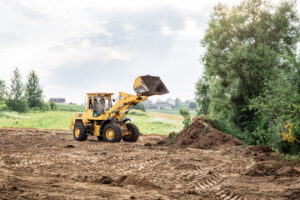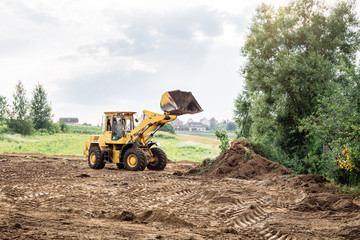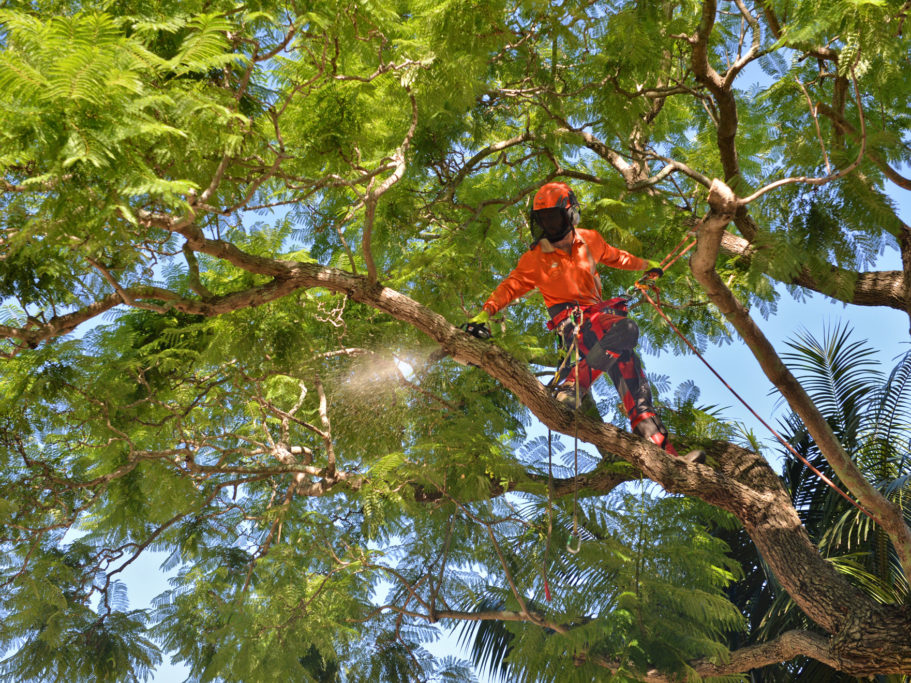Land Clearing is the process of preparing a piece of land for construction or farming. It can be done manually or using machinery.
Overgrown vegetation poses safety hazards and interferes with plant growth. Removing the overgrowth helps plants access more water and nutrients in the soil. It also prevents fires and improves the overall appearance of the property.
Property valuation is an important process that can help a developer determine the best use of a land site. It takes into account a variety of factors, including market conditions and local regulations. It is also a great way to assess the potential for future growth and development. It is a necessary step in preparing for construction projects, such as building new homes or commercial buildings.
Land clearing is the process of removing trees, brush, and debris from a piece of land. It is a crucial first step in transforming raw, undeveloped land into a suitable construction site. It can also be used to improve the aesthetic of a property by removing invasive vegetation and other obstructions. Land clearing can also boost a property’s value by increasing its usable space and making it more appealing to buyers.
Performing a thorough property evaluation is essential before beginning any land clearing activities. This process will allow you to identify any obstacles that may hinder the construction process and prepare a plan to overcome them. It is also a vital step in ensuring that your project meets local environmental standards and is safe for construction workers.
One of the most important aspects of property evaluation is determining the “highest and best use” of the land. This involves assessing the land’s unique features and comparing it to other possible uses. For example, a vacant lot in a commercial zone would be more valuable if developed into a shopping center than as a residential home.
Vegetation Assessment
When land clearing, it is important to carefully assess the vegetation on your property and develop a clear plan for how you will proceed. This will help you avoid soil erosion, protect wildlife habitats, and prevent the spread of invasive species. It will also help ensure that your project complies with environmental regulations and permits.
In addition to being environmentally friendly, sustainable land clearing also helps improve your property’s value. By removing overgrowth, you can create more usable space and take advantage of natural features like streams, rock formations, or unique trees. It can also reduce fire risk, which is especially crucial in the Sunshine Coast region where wildfires are a serious threat to homes and businesses.
The first step in the land clearing process is to conduct a site inspection to determine what types of vegetation need to be cleared and how much area needs to be cleared. This will help you identify any obstacles or potential issues that may arise during the clearing process and determine what equipment or methods are best for your particular situation. It is also important to evaluate the terrain and soil conditions, as this will influence the type of machinery required.
By choosing to only clear dead or invasive plants, you can promote healthy growth and maintain a balanced ecosystem. Additionally, by utilizing mulching and silt fencing, you can stabilize the soil, minimize erosion, and protect surrounding habitats.
Develop a Clearing Plan
A clear and detailed plan will help ensure that land clearing is done effectively. It will help to determine the scope of work, set a timeline and estimate resources and equipment needed. It will also address any environmental regulations and permits that may be required. This will prevent unforeseen obstacles from arising midway through the project and avoid costly delays.
Land clearing can be a complicated process, especially when working with rocky terrain or natural vegetation that needs to be preserved. Taking the time to assess the property and identify the specific vegetation that needs to be removed will reduce the risk of errors. It will also allow for more efficient use of machinery and other resources.
Using forestry mulching techniques during the clearing process helps to minimize soil disturbance and promote the health of the remaining vegetation. This will reduce weed growth, pest infestations and encourage new plant growth. It will also help to conserve water and protect against erosion.
Developing a clear and detailed land clearing plan will help to ensure that the project is completed in an effective and timely manner. In addition, it will help to minimize the risk of accidents and costly delays during construction.
Safety Measures
Whether you’re clearing land to prepare for construction or improve aesthetics, it’s important to take proper safety measures. This involves prioritizing worker safety, implementing equipment maintenance, and establishing clear communication channels to ensure all team members are aware of safety protocols and emergency procedures.
Safety precautions also include wearing appropriate gear such as hard hats, gloves, safety goggles, and steel-toed boots to prevent injuries from falling debris or contact with machinery. Keeping first-aid kits nearby and a phone on site can also be useful for quick access to help in case of an accident.
In addition to these safety measures, it’s crucial to consider the impact of land clearing on the surrounding environment. Performing a biodiversity assessment can help identify any endangered species or habitats that may be affected by clearing activities. Additionally, incorporating erosion control measures can help minimize soil degradation and water pollution.
With careful planning, priority of safety, and utilizing the right equipment, land clearing can be an effective and efficient method for transforming overgrown spaces into functional, aesthetically-pleasing areas. By adhering to local regulations and embracing sustainable practices, Robinson Landscape can ensure a smooth process from start to finish. Reach out today to learn more about how we can assist with your next project! We specialize in comprehensive land clearing solutions, including grubbing, mulching, stump grinding, and brush cutting. Our dedicated crews provide reliable, efficient service while ensuring the highest quality of work.
Local Regulations
Land clearing is a crucial step in property preparation for construction, agriculture, and other uses. It removes trees, brush, and other vegetation to create a level surface, which is necessary for laying foundations and constructing stable structures. It also improves site access, making it easier for construction vehicles and workers to maneuver around the site. Finally, it enhances the aesthetics of a site and can even increase its value.
It is important to understand local regulations and comply with them when clearing land. Many areas have laws that dictate the type and amount of vegetation that can be removed, as well as restrictions on how close to bodies of water or protected wildlife habitats it can be. Ignoring these laws can result in fines and delays for your project.
There are a variety of methods used in the clearing process, including manual clearing with hand tools and machinery like bulldozers and excavators. In addition, debris is often chipped or ground into mulch and then hauled away for disposal. Once the land is cleared, it can be graded and stabilized with techniques such as adding soil amendments or installing erosion control barriers. It is also often seeded and mulched to promote vegetation growth and prevent soil erosion. Finally, the cleared site is often reviewed for compliance with local zoning and environmental regulations. This process helps ensure that the land is ready for construction and other intended uses while ensuring that it does not impact surrounding ecosystems.
Hire Professionals
Land clearing prepares property for construction, development, and other projects. By removing trees, shrubs, brush, and debris, professionals can create a clear path for your vision to take shape. It also helps prevent problems that can arise during construction, including soil erosion and compromised plant growth.
Professionals use high-capacity equipment that speeds up the clearing process. They also have years of experience and a thorough understanding of local regulations regarding vegetation and environmental considerations. This knowledge helps them select the best method to clear your property and ensure compliance with the law.
They can save you time and money by completing the job in a shorter period than you would have to on your own. They can also help you avoid costly fines for environmental damage that you might incur if you try to clear your land yourself.
Professionals can also make it easier to install utilities, such as water pipes and cables, by removing large plants and trees. They are also trained to conduct careful underground excavation without causing any damage. A well-done land clearing project can help you make the most of your property, increase its value, and give it a fresh, clean look. It can even enhance its aesthetics and provide you with a place for outdoor recreation. Contact SSD Civil Contractors today to see how our professional land clearing services can transform your property.

